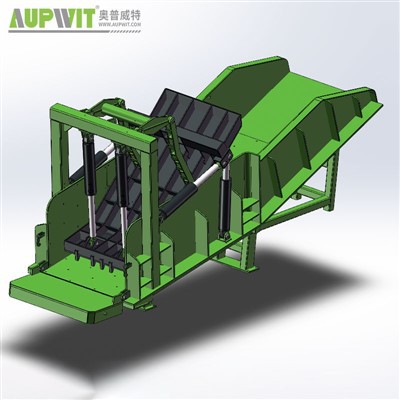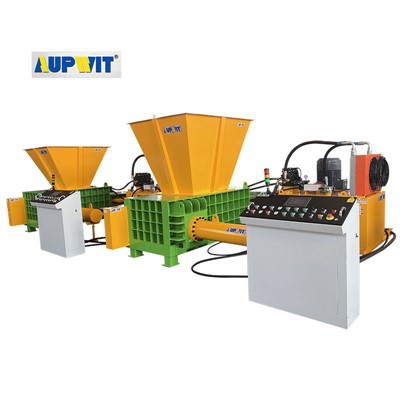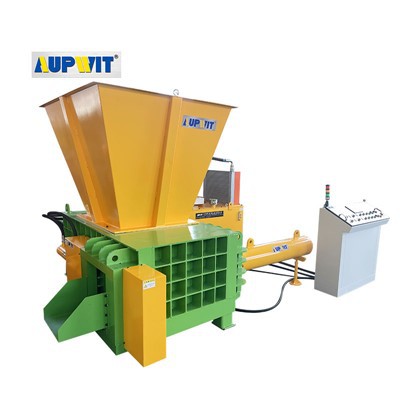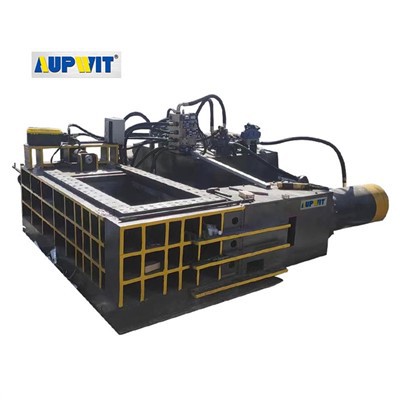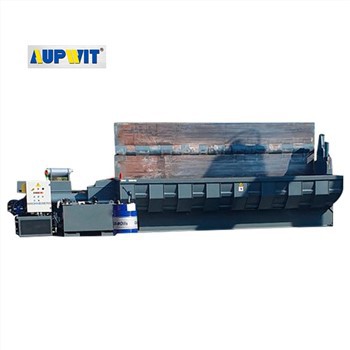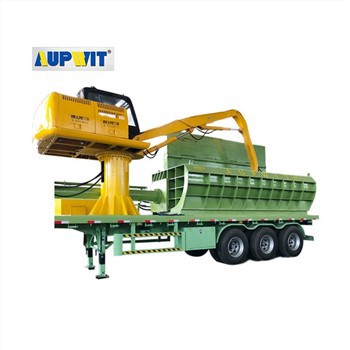Introduction
Vertical metal balers are essential machines in the recycling industry, primarily designed to compact various types of metal scrap into dense, easy-to-handle bales. These machines are a vital part of scrap yards, metal processing plants, and recycling facilities, where they significantly contribute to efficient metal waste management. In this article, we’ll explore the key features, advantages, and applications of vertical metal balers.
1. What is a Vertical Metal Baler?
A vertical metal baler is a hydraulic-powered machine that compresses metal scrap into compact bales. Unlike horizontal balers, which are typically used for large-scale operations, vertical balers are designed to save space, making them ideal for smaller facilities with limited floor area. They are operated vertically, meaning the material is loaded from the top, and the baling process is done in a vertical chamber.
These balers are commonly used for processing a wide range of metal scrap types, including aluminum cans, steel scrap, and copper wire. The resulting bales are more manageable and can be sold directly to metal refineries or used for further processing.
2. How Does a Vertical Metal Baler Work?
The operation of a vertical metal baler involves a series of steps that transform loose metal scrap into compact bales:
-
Loading: Metal scrap is loaded into the machine’s compression chamber. This is typically done manually or with a conveyor system for larger operations.
-
Compression: The baler uses hydraulic pressure to compact the metal into a dense, tightly bound bale. The press applies force vertically, pushing the material downward and reducing its volume significantly.
-
Bale Formation: Once the material is compressed, a wire or strapping mechanism ties the bale to ensure it holds its shape during transport.
-
Ejection: After the bale is fully formed, the vertical metal baler ejects the finished bale from the machine, and the process starts again.
3. Key Features of Vertical Metal Balers
-
Space Efficiency: Vertical metal balers are designed for smaller spaces and are ideal for businesses with limited floor area.
-
Hydraulic System: These balers utilize a hydraulic system to apply pressure, ensuring optimal compaction and efficiency.
-
User-Friendly Operation: Most vertical balers come with easy-to-use controls and automated features, reducing manual labor and improving productivity.
-
Adjustable Bale Size: Depending on the model, users can adjust the bale size to meet their specific needs. Smaller bales can be created for easier handling, or larger bales for more efficient storage.
-
Energy-Efficient: Vertical balers are known for their energy efficiency compared to other types of machines in the metal recycling industry.
4. Advantages of Vertical Metal Balers
-
Increased Efficiency: These balers can process a large volume of scrap metal in a short amount of time, improving operational efficiency.
-
Cost-Effective: Due to their space-saving design and relatively low maintenance needs, vertical balers offer a cost-effective solution for businesses handling smaller quantities of scrap metal.
-
Reduced Waste: By compressing scrap metal into compact bales, the volume of waste is reduced, making it easier to handle and store.
-
Improved Safety: Since vertical balers are typically operated from a standing position, they provide a safer working environment by reducing the need for manual lifting and handling.
5. Applications of Vertical Metal Balers
Vertical metal balers have a wide range of applications, particularly in industries where scrap metal is processed:
-
Scrap Yards: Vertical balers help scrap yards manage metal waste more efficiently, enabling them to process various types of scrap and prepare them for resale.
-
Automotive Industry: Car manufacturers and dismantlers use vertical metal balers to compact automotive scrap metal, such as aluminum parts, steel components, and used car bodies.
-
Metal Recycling Plants: These balers are commonly used in metal recycling plants to produce high-quality bales of various metals for further processing or sale.
-
Municipal Recycling Facilities: Vertical balers also play a crucial role in municipal recycling operations, particularly for compacting aluminum cans and other light metals.
6. Maintenance of Vertical Metal Balers
To ensure the longevity and efficiency of a vertical metal baler, regular maintenance is essential:
-
Lubrication: The hydraulic components, including the ram and the pump, should be lubricated periodically to reduce wear and tear.
-
Check for Leaks: Regularly inspect the hydraulic system for leaks to prevent performance issues.
-
Clean the Machine: Keeping the baler clean and free from metal debris is vital for smooth operation.
-
Inspect the Hydraulic Pressure: Ensure the hydraulic system is functioning properly by monitoring the pressure settings.
7. Conclusion
Vertical metal balers are indispensable tools for scrap metal recycling businesses, offering efficiency, compactness, and cost-effectiveness. Their ability to handle a wide variety of metal scrap and produce dense bales for easy storage and transportation makes them a popular choice in recycling plants, scrap yards, and other industries dealing with metal waste. Regular maintenance and proper operation can extend the life of the baler, ensuring that it continues to deliver high-performance results over time.


